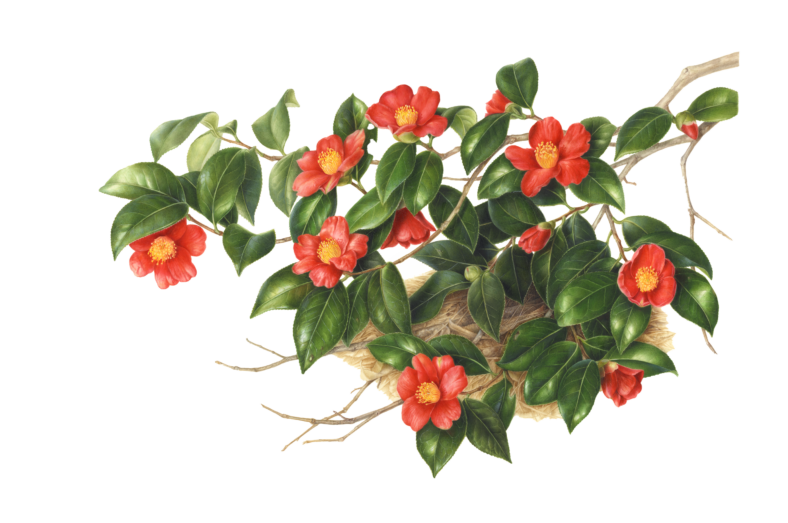
Plants that originated in Japan have had an enormous impact on the gardens of the world. It is difficult to imagine spring without flowering cherries, irises, wisterias, and magnolias. Or autumn without the brilliant reds, oranges, and golds of chrysanthemums, ginkgo, and maples. Yet the unique story of these plants is generally untold. What were their uses and cultural significance in the Japanese garden? How did they travel across the oceans and gain popularity in both public and private gardens?
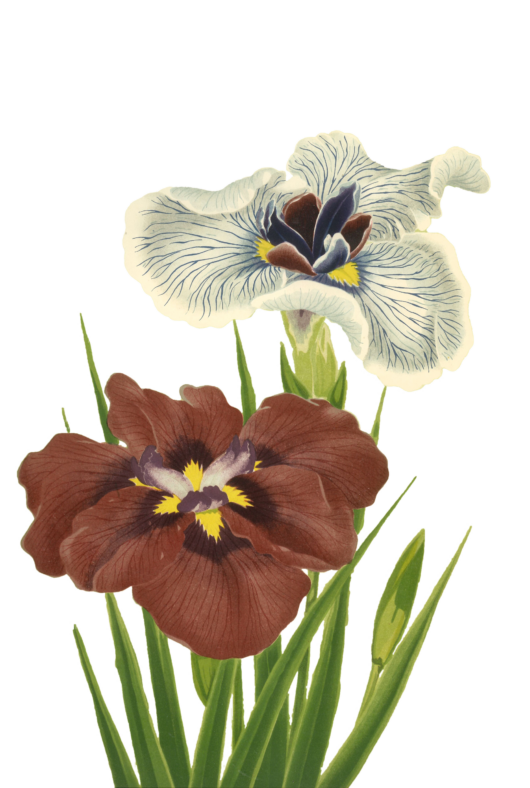
Unfolding across both our gallery spaces, the exhibition, Gifts from Japan, is a muti-faceted tale spanning history, science, migration, and art. The Calvin and Mayho Tanabe Gallery sets the scene for how these iconic plants became popular and widespread around the globe and presents a window into the Japanese American experience as immigrant families cultivated gardens and helped naturalize such well-known flowers. The horticultural journey continues in Flora Japonica in the Pavilion Gallery. Explore
the ways that Japanese plants have continued to captivate generations of artists as we present a juried display of contemporary botanical
illustrators’ work.
Among the botanical illustrations on display in the Pavilion Gallery is “Yama-zakura” Cerasus jamasakura, a 2017 work done in watercolor by Mieko Ishikawa. Ishikawa recently was named the first recipient of The Shirley Sherwood Award for Botanical Art and is considered the most prominent botanical artist in Japan. Her internationally acclaimed art is in collections around the world, including Royal Botanic Gardens, Kew and the Flower Museum, Chiba. “Yama-zakura” demonstrates Ishikawa’s affinity and expert-level knowledge of cherry blossoms, one the central themes of her work.
Botanical gifts from Japan continue to renew themselves each year. With each successive season, we are reminded of the joys of cultivating our gardens.
Please view the related but independent sections in any order.
A Culture of Flowers
Calvin and Mayho Tanabe Gallery
In the Edo Period (1603 – 1868), flowers
played an integral role in both daily life and the annual cycle of festivals. A unique language of flowers developed. During this time, a close relationship developed between Japan’s flora and popular culture. Flower viewing became a popular pastime. Painters and poets included references to seasonal flowers in their works. Flowers played an important role in shaping the Japanese culture we enjoy today.
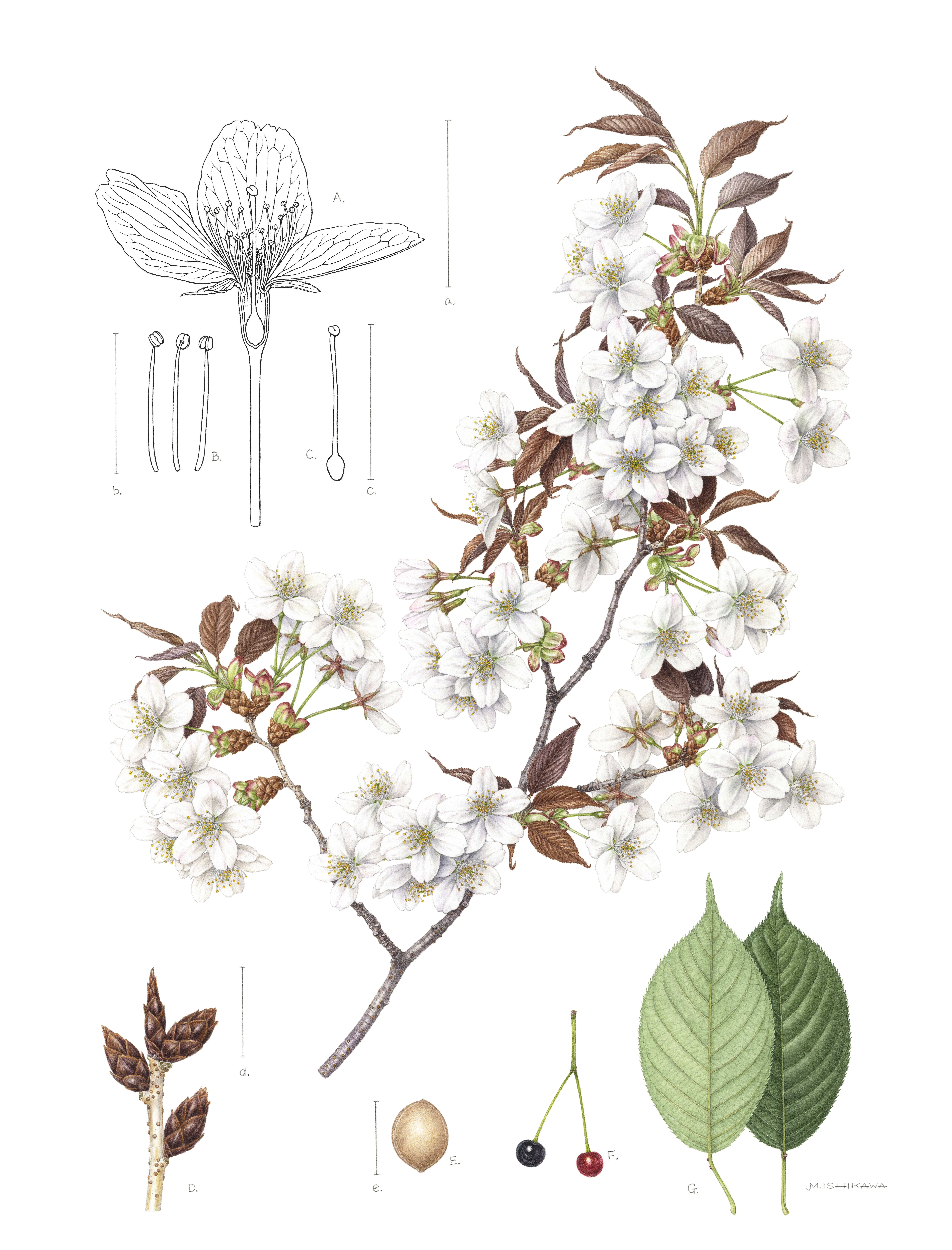
Japan and the World
Calvin and Mayho Tanabe Gallery
The 1867 International Exposition in Paris gave the West its first glimpse of Japan – a country that had previously closed itself to the outside world for over 200 years. In the United States, World’s Fairs provided the first glimpse of Japan and its highly developed garden arts. In 1876,the first Japanese garden was constructed for the Philadelphia Centennial Exhibition.
The Yokohama Nursery Co. Ltd. was a major collaborator in creating these botanical displays at World’s Fairs. The company opened overseas branches in San Francisco, New York, London, and Shanghai, shipping 15 million bulbs around the world by 1910. The Yokohama Nursery continued to popularize Japanese plants and gardens through its richly illustrated catalogs, introducing global audiences to Japan’s floral and natural splendor.
Stewarding the Land: Honoring the Japanese American Journey
Calvin and Mayho Tanabe Gallery
Japanese immigrants continue to make significant contributions to the cultural and physical landscape of America. From importing familiar plants such as camellias, azaleas, and fruit trees to converting the Hood River Valley into productive orchards, Japanese Americans overcame towering obstacles to enrich the cultural tapestry of America. These hardworking and courageous individuals helped cement the beauty of Japanese plants into the consciousness of the American public.
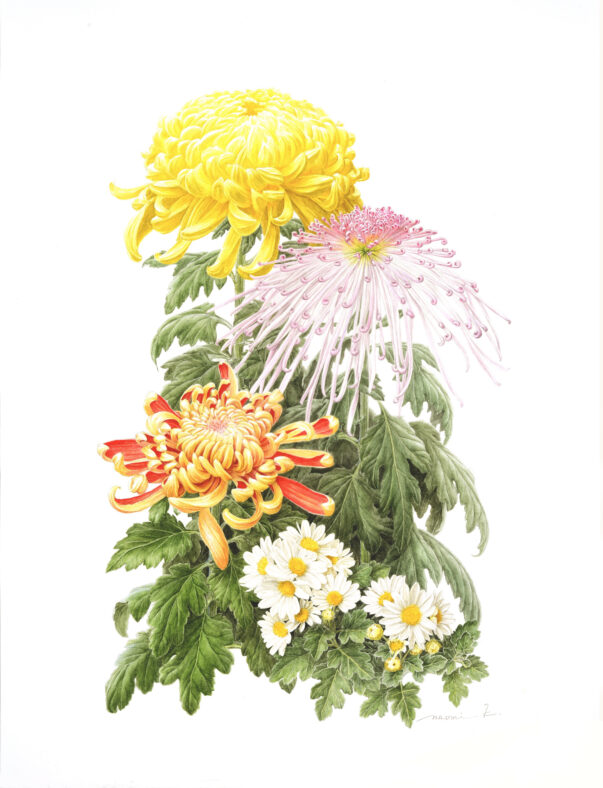
Flora Japonica
Pavilion Gallery
Japan possesses a richness and diversity of flowering plants. Botanists estimate there are between 5,000 and 6,000 plants native to the Japanese archipelago. The flora exist in a mountainous country with four distinct seasons and a diverse climate ranging from subarctic to subtropical.
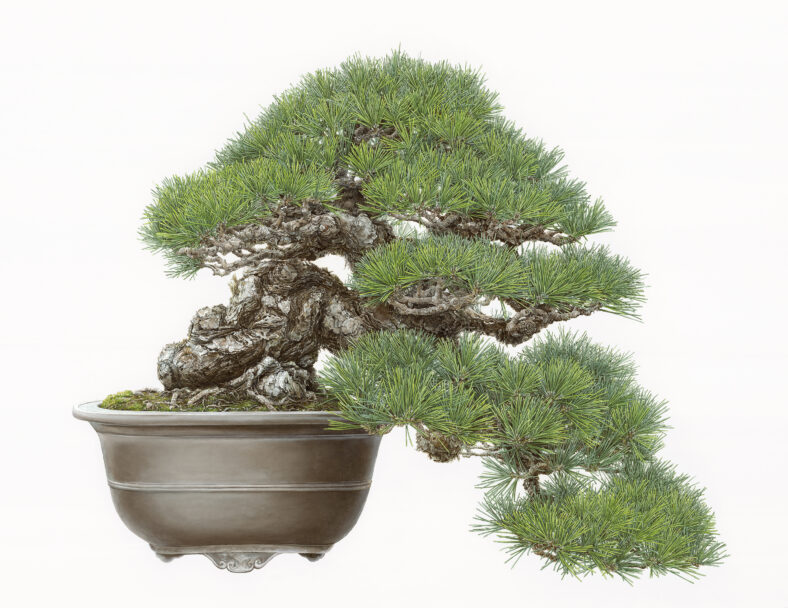
This section features beautiful illustrations of
Japanese native plants common in Western gardens. These original paintings and drawings were created by leading botanical artists based
in Japan and the United States.
Botanical accuracy distinguishes these compositions from other types of art. The artist, like a scientist, closely observes nature to capture it in detail. The final result blends art and science.
Acknowledgements
Co-organized by The Huntington Library, Art Museum, and Botanical Gardens and Portland Japanese Garden.

Special thanks to Robert Hori, Guest Curator of Exhibition.
Exhibition Sponsors
